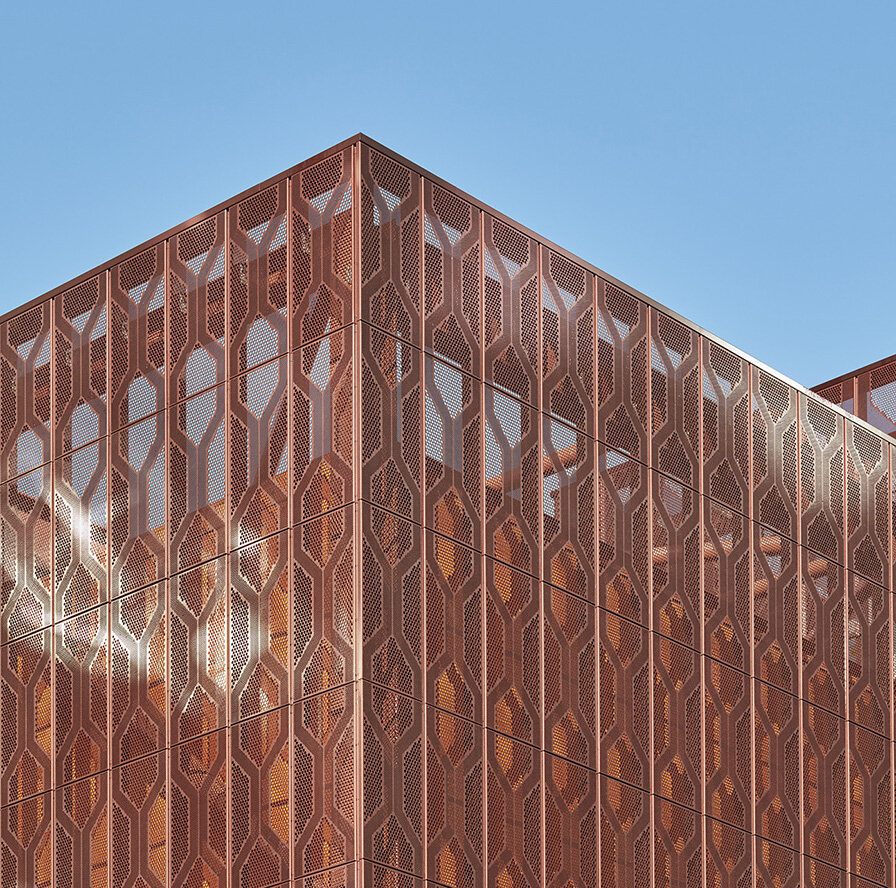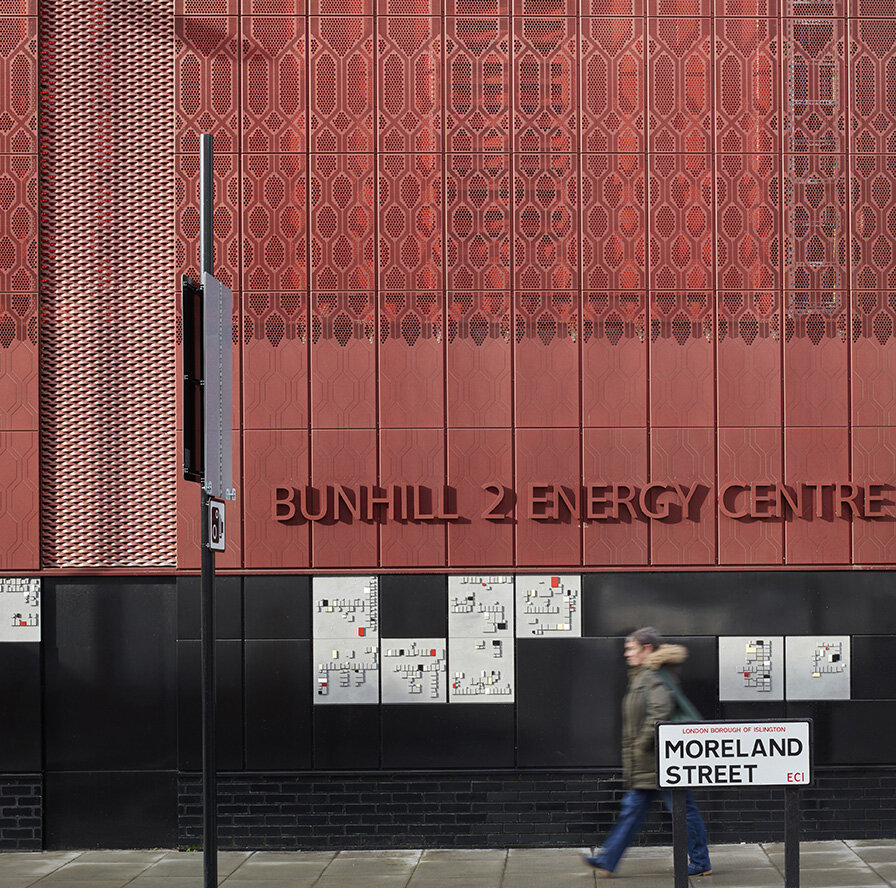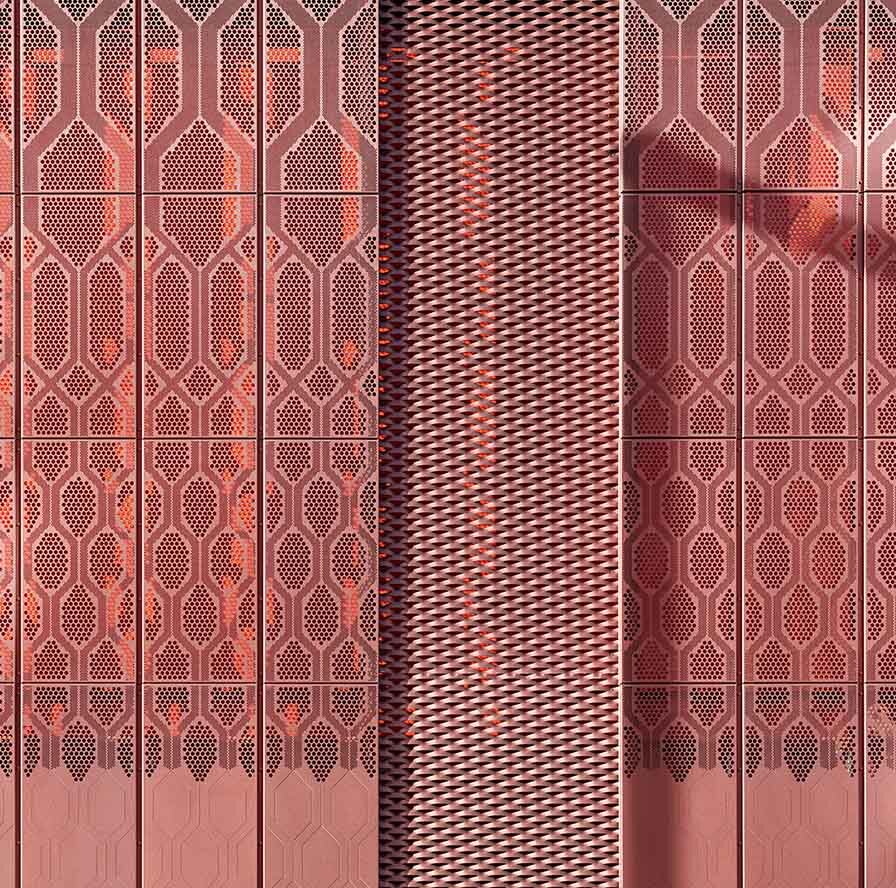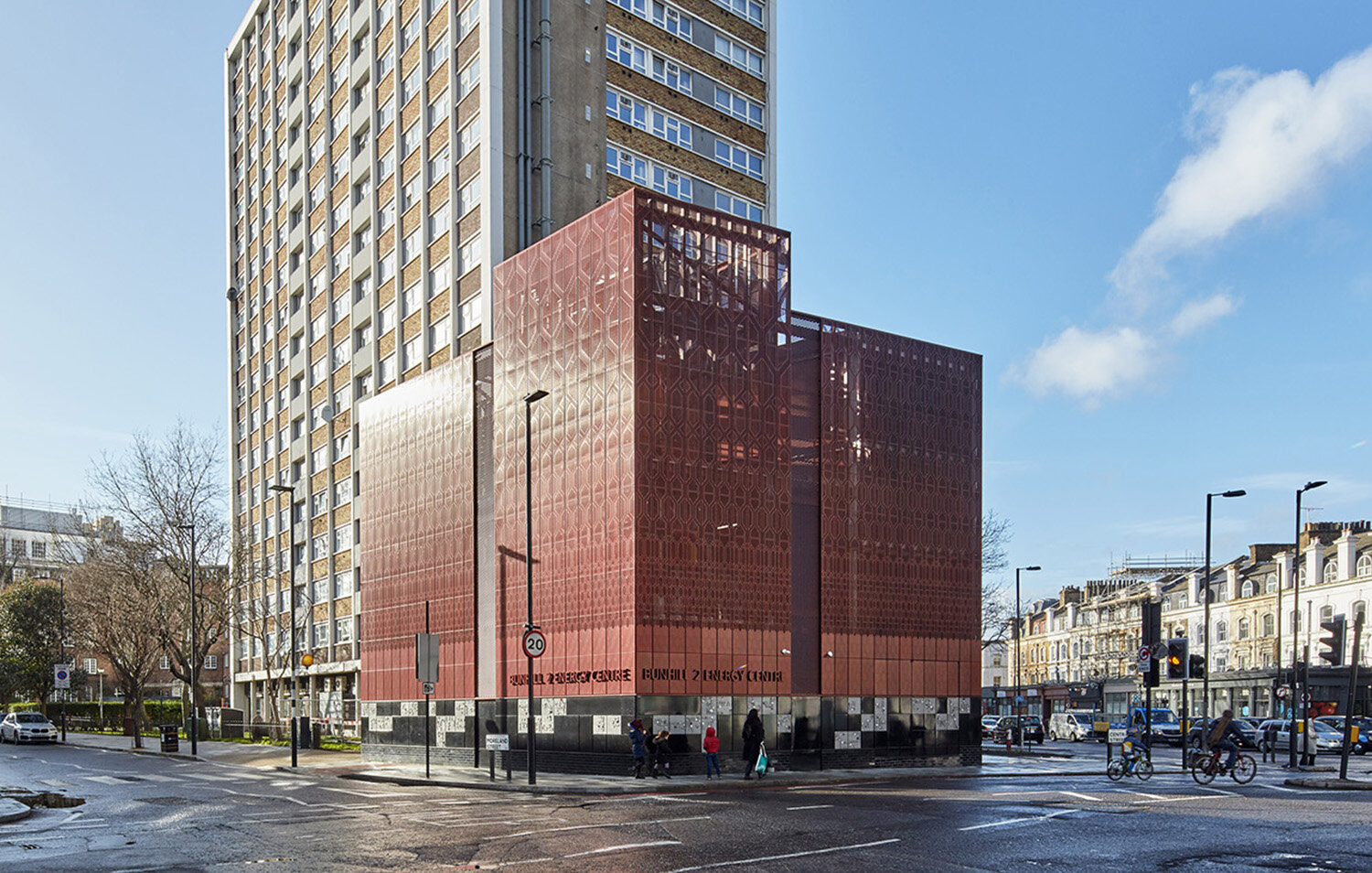BUNHILL 2 ENERGY CENTRE
Imagine waste heat from London’s Tube heating local homes
Project Insight
Islington Council continues its mission to end fuel poverty in the borough, while greatly reducing carbon emissions, by extending its heat network initiated in 2012.
Bunhill 2 Energy Centre uses waste heat from nearby London Underground tunnels to warm homes, leisure centres and a local school. This revolutionary project is the first of its kind in the world and provides a blueprint for decarbonising heat in potential future schemes; improving air quality and making cities more self-sufficient in energy.
We were approached by Islington Council following our successful completion of energy centres for the University of Warwick and the University of St Andrews. As a local practice and active member of the Islington Sustainable Energy Partnership, (ISEP) we were ideally placed.
Project Idea
Islington challenged us to create a building that would inspire, intrigue and “celebrate the necessary.” We were keen as a team to explore how a new language of civic industrial architecture could begin to define this new typology of heat networks, just as Joseph Bazalgette had revolutionised the design of the public water systems in the 19th century and Sir Giles Gilbert Scott celebrated the design of the utilitarian phone box in the 20th century.
Project Design
The small, neglected, but prominent site at a junction on City Road was full of disparate clutter, including the forlorn ventilation shaft of the former City Road Underground station, smothered in advertising hoardings and fly-postings, a shabby brick substation and left-over patches of space between.
Consulting extensively with the local community, Planners and local Councillors, our approach was to organise the new elements with existing features to create a well-composed assembly of prefabricated structures, clad in attractive materials and set in an enhanced landscape. The visual and environmental impact of the new energy centre on adjacent residents was minimised by composing the architecture to echo existing building lines, strengthen street edges and redefine the street corner.
We worked with artist Toby Paterson whose cast aluminium relief panels tesselate across the base and provide his contextual response to the local community. The perforated pattern in the cladding to the upper storeys ebbs and flows in response to the varying degrees of ventilation required for the equipment behind.
“It’s great to see this highly innovative project up and running, recycling waste heat from the Tube to provide a low-carbon, affordable way of heating local homes and businesses. I’ve set London the target of being carbon-neutral by 2030. It’s an ambition that will require innovative projects like Bunhill to help deliver it. If we’re truly going to tackle the climate emergency we will need progressive partnerships between local authorities, City Hall, TfL and others as was demonstrated so perfectly by this project.”
━━ Sadiq Khan, Mayor of London
Project Awards
RIBA Regional Award finalist (2022)
Energy Managers Association Awards Decarbonisation Project of the Year (2021)
RIBAJ MacEwen Award Commendation (2021)
New London Awards Environmental Prize (2020)
RIAI Award for Sustainability (2020)
RIAI International Award Commendation (2020)
Dezeen Awards Finalist (2020)
Blueprint Awards Finalist (2020)







